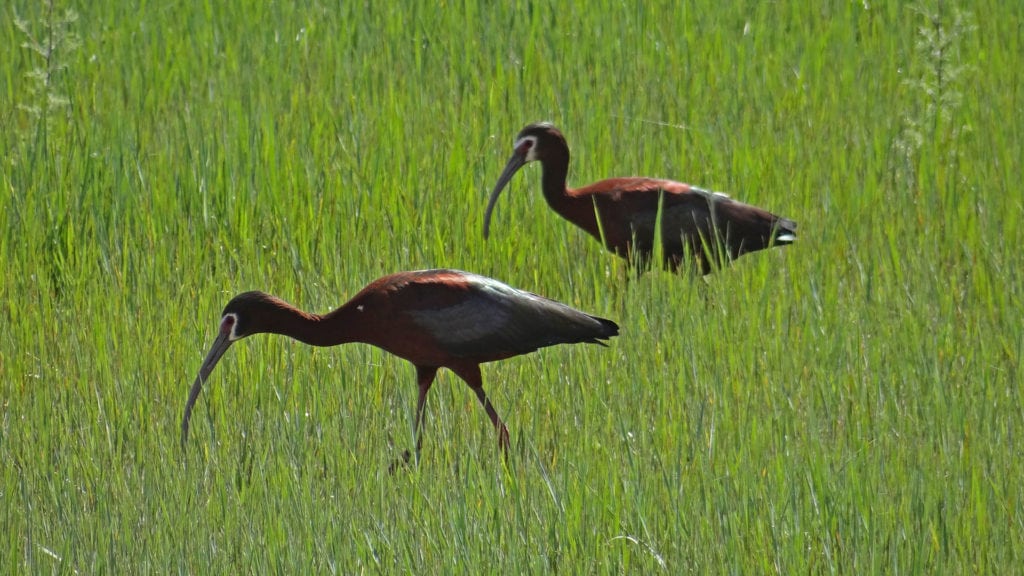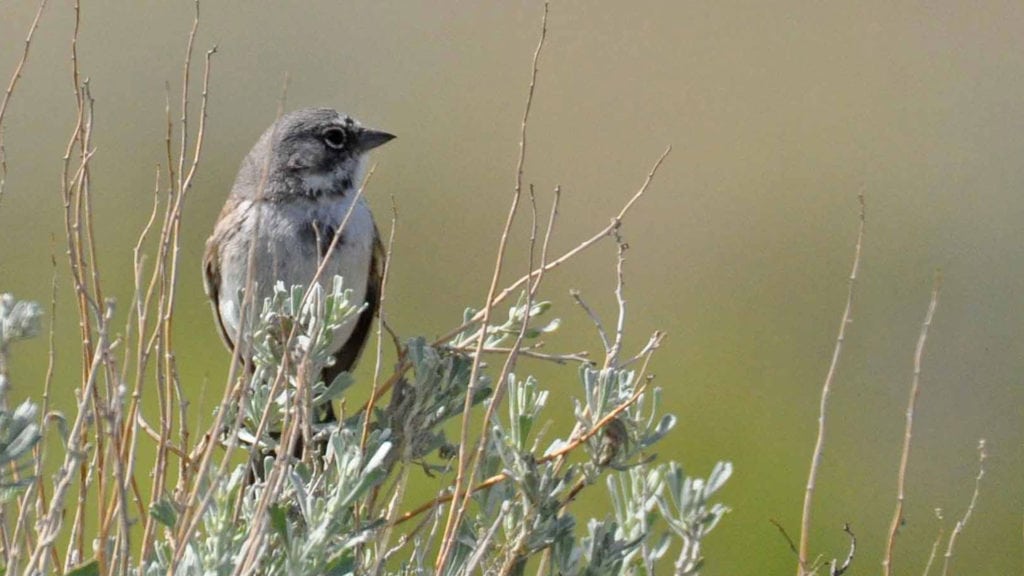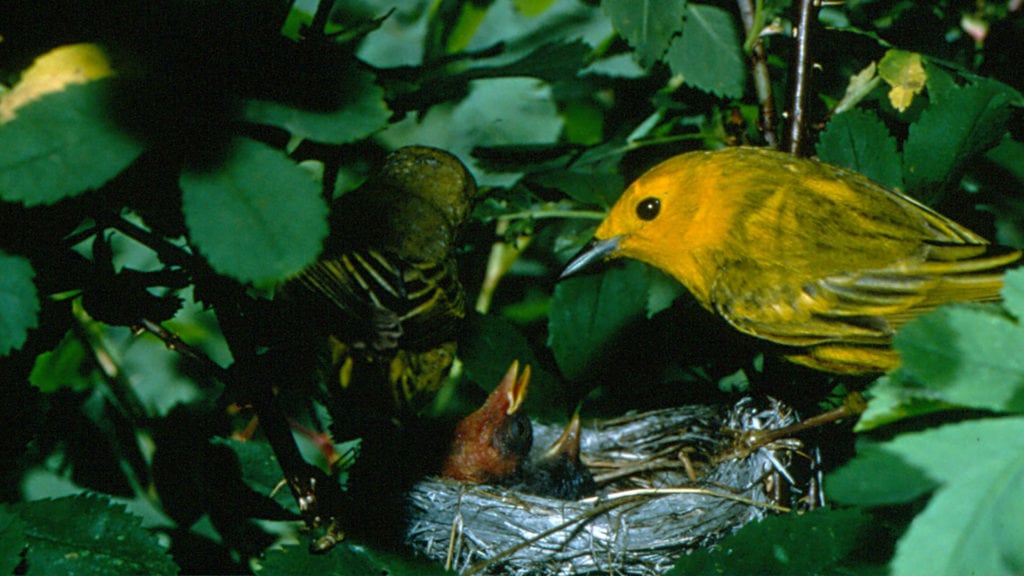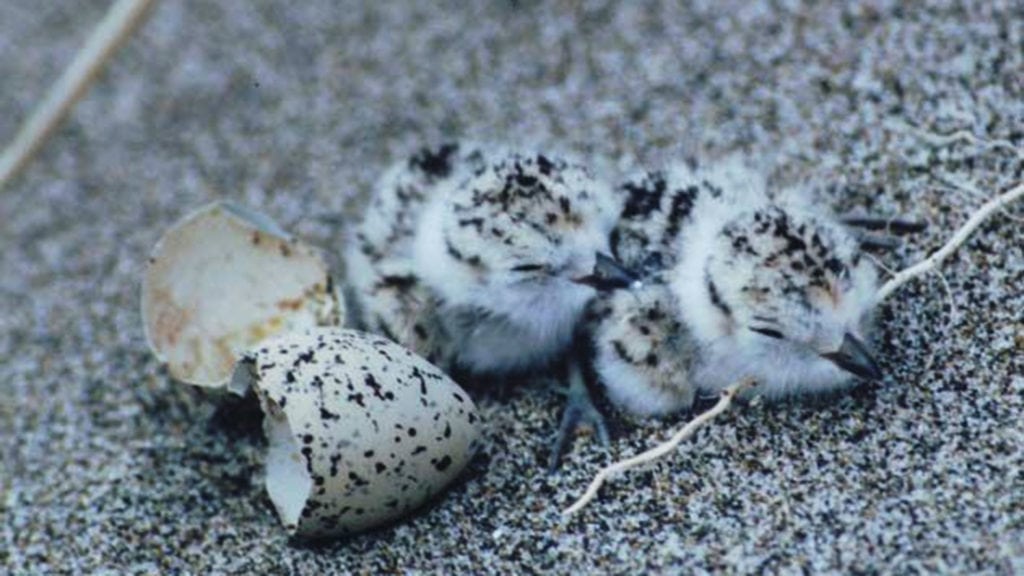Migratory Birds of the High Desert
Author: Scott Donahue | Published: May 23, 2018 | Category: Species Spotlight Every year, dozens of beloved bird species migrate from their part-time homes around the world back to the […]
Read MoreLaurel Parshall

Wading in shallow waters, the white-faced ibis (Plegadis chihi) probes its long, scythe-shaped beak into the soft mud for shellfish, mollusks, and grubby earthworms. Though their faces have a sliver of white around the beak and eyes, their plumage varies with a plum neck, and bronze and jade wings. In summer, they fly back to breed in the high-desert wetlands like Malheur Lake and Paulina Marsh.
Their conservation status is low concern, but seasonal stresses like drought and river damming can scare white-faced ibises from their marsh and estuary niches.

Year after year, sagebrush sparrows (Artemisiospiza nevadensis) return to their roots to their breeding ground after spending winter in New Mexico, Texas and Arizona. These sparrows cover the largest territory of any other sparrow species, from the basalt-raised steppe of the Columbia Plateau to the southeastern stretches of Oregon’s arid Basin and Range. Their song, piercing and fine-tuned, carries across the windy meadows pocked with sagebrush. Yet the dangers of wildfires aggravated by invasive grasses like cheatgrass, however, threaten their summer home.

Named for its brilliant plumage and song, the yellow warbler (Dendroica petechia) breeds in riparian habitats of Oregon each year after traveling from winter homes as far south as Brazil and Peru. Beginning in late April or early May, they can be found among the native plant species that thrive along the waterways of the high desert. Although they are bright yellow, these skillful singers can often be heard before they're seen!
Once very common throughout the state, threats to habitat — particularly livestock grazing and invasive species that diminish the diversity of plant life these birds rely on — have led to large declines in population. Riparian restoration plans provide hope for increasing the available breeding grounds for these members of the warbler family.

On a summer night, you might hear the deep double-hoots of a flammulated owl (Otus flammeolus) somewhere off in a thicket of ponderosa pines and grand firs. Their calls might seem so far off that you have to pause mid-step to hear them, but don’t be fooled; they’re closer than you think! These tiny owls — smaller than a fist, weighing a scant tenth of a pound — adjust the volume of their calls when they sense humans close by. Their woody plumage camouflages them against pine and fir bark, lending the average birder an additional degree of difficulty to spot them. One of fourteen other species of Oregon owl, the flammulated owls return to roost in forests spanning from the West Cascades to the Blue Mountains after wintering in the American southwest.

Western snowy plovers (Charadrius alexandrinus nivosus) can be found on the Oregon Coast year-round, roosting in any of the eight beach nesting areas. However, you can also find them in the salt pans and alkaline flats of Nearshore in summer months, pecking at small shellfish in the shallows. These tiny beach-nesters require sandy shorelines for laying up to three eggs per nest.
These birds face a number of threats ranging from predators to invasive species like European grass. Human interference — namely negligent hikers, dirt bikes, and unleashed dogs — trample plover nests, making the recovery of this species increasingly difficult. The Oregon Conservation Strategy lists the western snowy plover as threatened, yet conservation measures have been taken to remove the invasive grass and limit human activity in western snowy plover nesting areas.
Scott Donohue is the author of How to Build a Fire, a book that outlines ways to build fires responsibly in cabins, campgrounds and survival situations. He has blogged for YellowStonePark.com and worked in the editorial department for Sierra, where he had the chance to interview Alex Honnold and report on breaking news concerning conservation and climate change.
Photos: White-faced Ibis- Craig Miller. Sagebrush Sparrow- Laurel Parshall. Yellow Warbler- Daniel Sherman. Flammulated Owl- Jerry Oldenettel. Snowy Plover- B. Casler/USFWS.
Oregon’s high desert is teeming with a diversity of fish and wildlife, including species that are found nowhere else on the planet. Living in high desert sagebrush steppe, with all […]
Read MoreA guide to watching migrating birds at the Malheur National Wildlife Refuge for first-time visitors. Few events will put you in touch with the rhythms of the natural world quite […]
Read MoreAuthor: Scott Donahue | Published: May 23, 2018 | Category: Species Spotlight Every year, dozens of beloved bird species migrate from their part-time homes around the world back to the […]
Read More